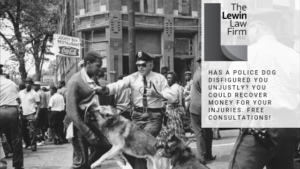
Sometimes I worry about the violence in our country, but not in the way others expect. While it can be said our violent culture is a pervasive issue for police departments, a more accurate statement would be that our violent culture is a response to the example set by our government and police officers; a tit for tat escalation. For example, an officer uses his baton to beat a gang member in the street unnecessarily, and in response, the gang murders a random officer in cold blood. Of course, the murder was heinous and unlawful, but then the police department uses the murder to justify even more violent, intrusive, and aggressive techniques so the cycle continues. Retaliation rarely settles disputes, but violence is the most disturbing when perpetrated by those that are charged with protecting us.
Police brutality has been an issue for as long as police have existed. When the ultimate power to do harm to a fellow citizen is exercised too freely, it can result in liability. Being guilty of whatever crime you were being arrested for is not a defense to that liability. An officer’s use of force must be reasonable, otherwise it can be considered a violation of your 4th Amendment rights. When refusing to obey lawful commands is considered resisting arrest, police deploy force, sometimes deadly force, to secure compliance. But what if the arrestee is not a threat? What if their crimes were non-violent? What if they are just hiding and not running? What if the officers don’t follow their policies and procedures as it relates to apprehension with police canines? What if they are cruel and use their canine to torture suspects as a little extra punishment for their wrongdoing?
Police dogs present similar issues to cars. Both can be mere instrumentalities of force or used for other non-force-related purposes. In a high-speed chase, when an officer uses his police cruiser to cause the suspect to crash, that is an application of deadly force to apprehend the suspect. The suspect has to be a threat. In other words, it has to be worth the use of deadly force. Similarly, dogs are controlled by the canine handler. They are trained to obey all commands by the handler, but sometimes don’t. This can result in additional unintentional force being applied to apprehend a suspect. In extreme cases, the canine handler eggs the dog on to continue biting and mauling the suspect. The Broward County Sheriff’s Office just settled such a suit for $175,000.
Have you been the victim of excessive force or police brutality? Do you have serious and/or permanent injuries? Don’t wait! Take the following immediate steps to preserve evidence of your mistreatment.
- Contact an attorney right away who is passionate about the issue.
- Take pictures of the scene and any injuries you have.
- Write down everything you remember about the incident, including the officer’s names, badge numbers, witnesses, contact information, and any other relevant information. Include all the little details such as what the officers were saying, how many were there, whether you were hit and how many times, etc.
- File an internal affairs complaint. This will often trigger an investigation where the officers involved will make statements that can later be requested by your attorney. Consult with your criminal defense attorney before making any internal affairs complaints.
- Send a ‘preservation letter’ to the relevant police department. Such a letter requests the department to keep any evidence, records, or documents related to the incident in anticipation of litigation. That way, they can’t say it was already destroyed when requested at a later date.
- Realize that any plea you take in the criminal case could have a negative impact on your potential lawsuit.

